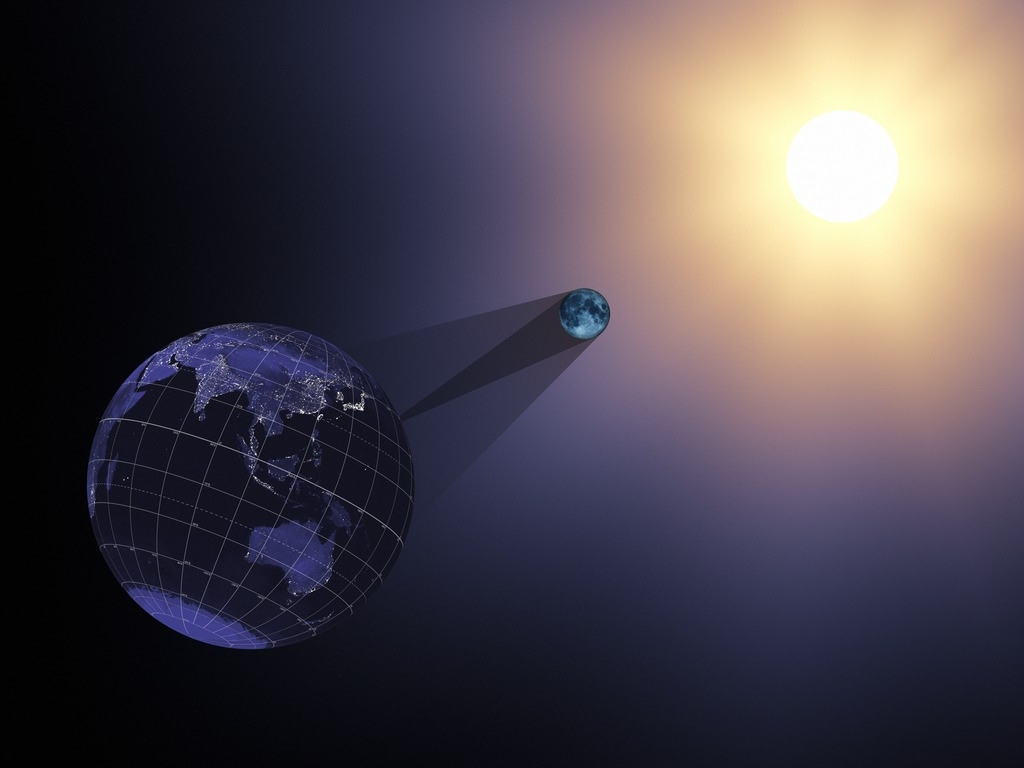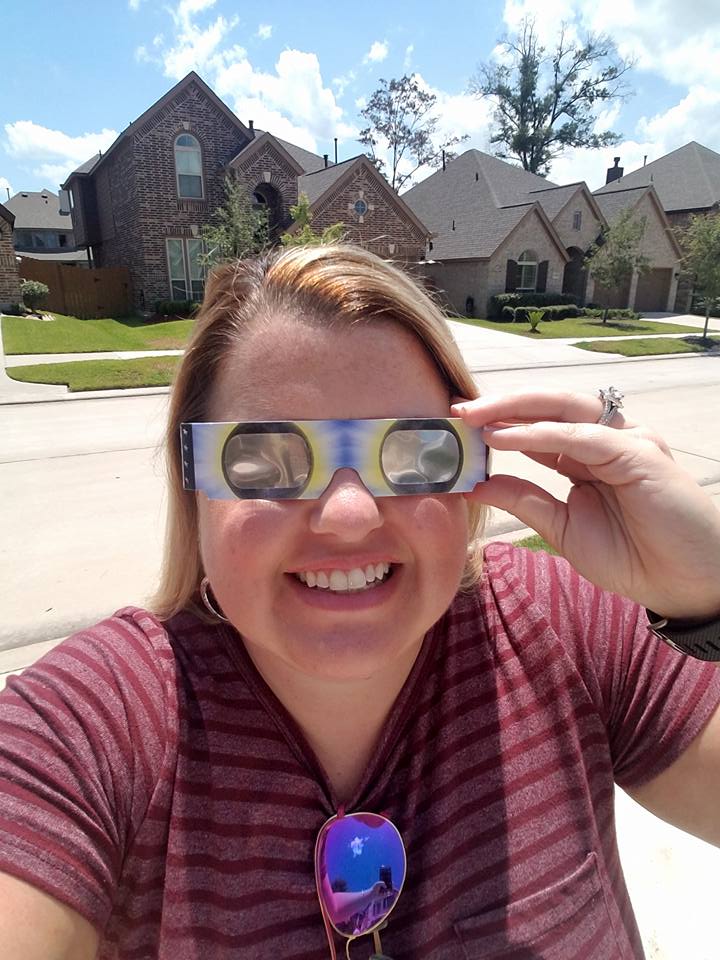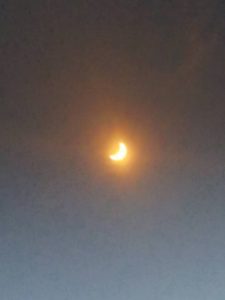2017 Total Solar Eclipse Was AMAZING

Monday August 21st 2017 will be remembered as the day everyone was in awe as they looked up into the sky as the first coast to coast total solar eclipse since Woodrow Wilson was president! It had been 99 years since America’s last Pacific-to-Atlantic total solar eclipse in 1919, and 38 years since the last such eclipse occurred in the continental U.S. That was 1979, before almost half of Americans alive Monday were born.
My family and I were able to hang out in our front yard to witness this spectacular event along with many of our neighbors. Some had homemade viewing devices, fashioned from cardboard and a plastic filter. Others had special viewing glasses.
Witnessing the moon cover the sun was certainly was one of the most incredible things I have ever seen. I read an article online that even astronomers were stunned. “The sun disappearing in midday? The stars coming out? Truly special,” said Steve White, the director of Fresno State University’s Downing Planetarium.
Now, we are all looking forward to the next one in 2024!


Fun Facts About The Solar Eclipse:

It’s all about magnitude and obscuration. Astronomers categorize each solar eclipse in terms of its magnitude and obscuration, and I don’t want you to be confused when you encounter these terms. The magnitude of a solar eclipse is the percent of the Sun’s diameter that the Moon covers during maximum eclipse. The obscuration is the percent of the Sun’s total surface area covered at maximum. Here’s an example: If the Moon covers half the Sun’s diameter (in this case the magnitude equals 50 percent), the amount of obscuration (the area of the Sun’s disk the Moon blots out) will be 39.1 percent.
Solar eclipses occur between Saros cycles. Similar solar and lunar eclipses recur every 6,585.3 days (18 years, 11 days, 8 hours). Scientists call this length of time a Saros cycle. Two eclipses separated by one Saros cycle are similar. They occur at the same node, the Moon’s distance from Earth is nearly the same, and they happen at the same time of year.
The end of the eclipse for the U.S. is not on land. The center line’s last contact with the U.S. occurs at the Atlantic Ocean’s edge just southeast of Key Bay, South Carolina. I’m pretty sure the crowd won’t be huge there.
Cool things are afoot before and after totality. Although the big payoff is the exact lineup of the Sun, the Moon, and your location, keep your eyes open during the partial phases that lead up to and follow it. As you view the beginning through a safe solar filter, the universe will set your mind at ease when you see the Moon take the first notch out of the Sun’s disk. Around the three-quarters mark, you’ll start to notice that shadows are getting sharper. The reason is that the Sun’s disk is shrinking, literally approaching a point, and a smaller light source produces better-defined shadows. At about 85 percent coverage, someone you’re with will see Venus 34° west-northwest of the Sun. If any trees live at your site, you may see their leaves act like pinhole cameras as hundreds of crescent Suns appear in their shadows.
Yes, the Sun’s a lot bigger. Our daytime star’s diameter is approximately 400 times larger than that of the Moon. What a coincidence that it also lies roughly 400 times farther away. This means both disks appear to be the same size.
Maximum totality is not the longest possible in 2017. The longest possible duration of the total phase of a solar eclipse is 7 minutes and 32 seconds. Unfortunately, the next solar eclipse whose totality approaches 7 minutes won’t occur until June 13, 2132. Its 6 minutes and 55 seconds of totality will be the longest since the 7 minutes and 4 seconds of totality June 30, 1973.
The future is bright but long. The next total solar eclipse over the continental U.S. occurs April 8, 2024. It’s a good one, too. Depending on where you are (on the center line), the duration of totality lasts at least 3 minutes and 22 seconds on the east coast of Maine and stretches to 4 minutes and 27 seconds in southwestern Texas. After that eclipse, it’s a 20-year wait until August 23, 2044 (and, similar to the 1979 event, that one is visible only in Montana and North Dakota). Total solar eclipses follow in 2045 and 2078.
Source:
http://cs.astronomy.com



